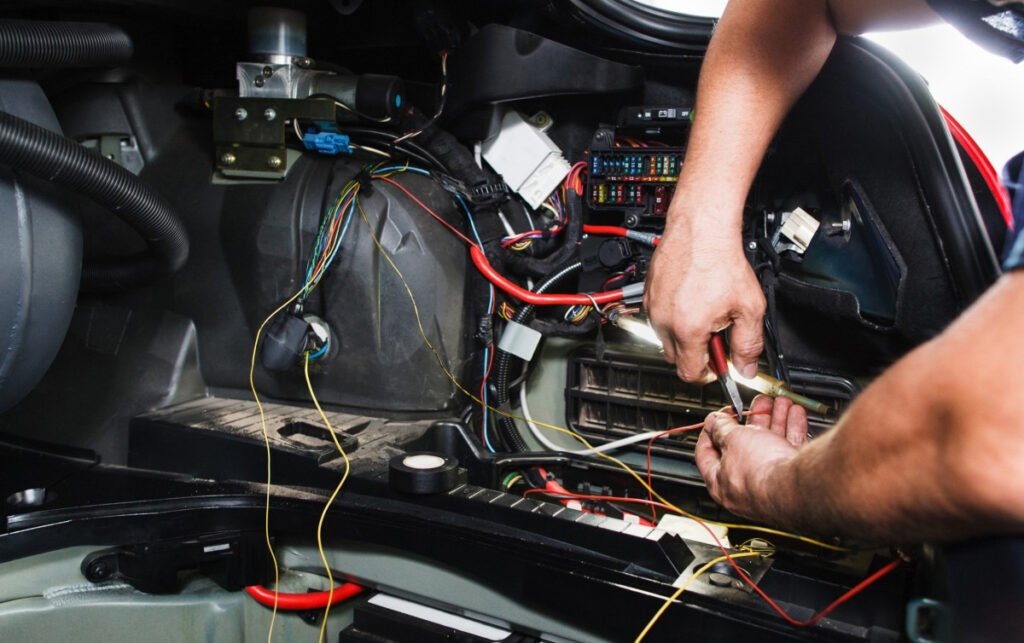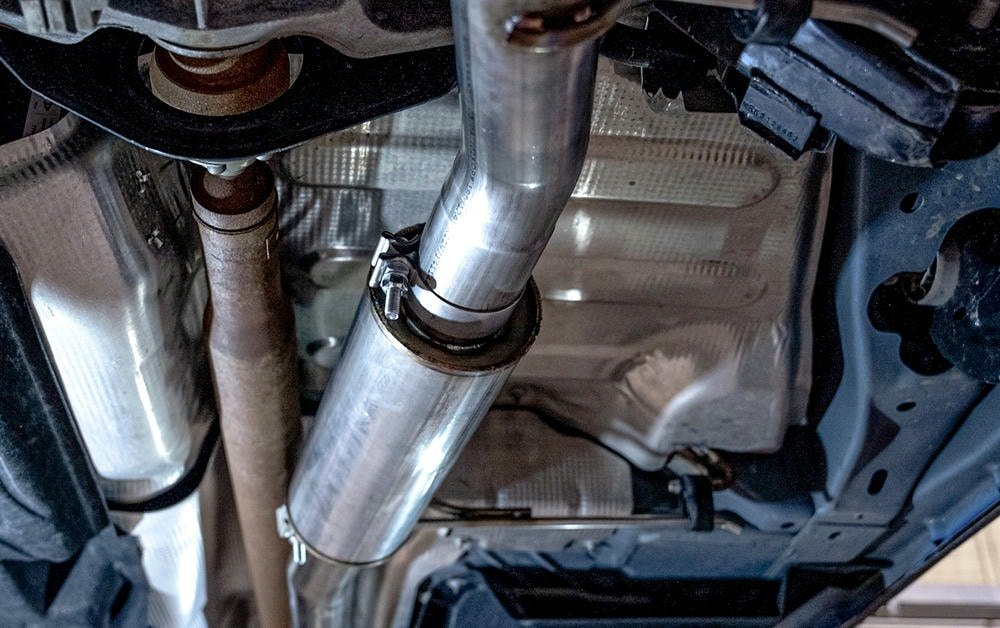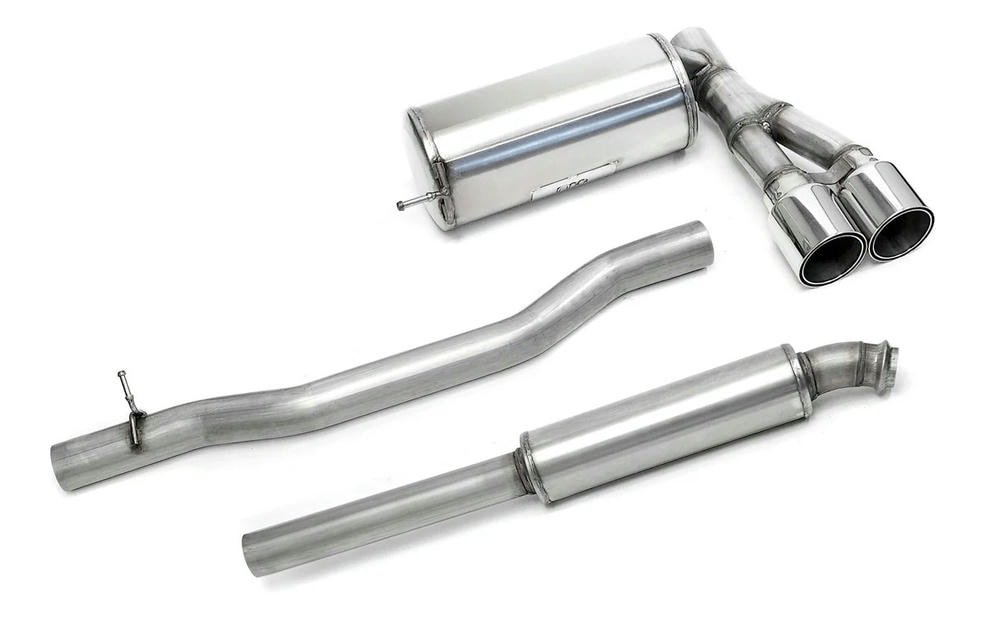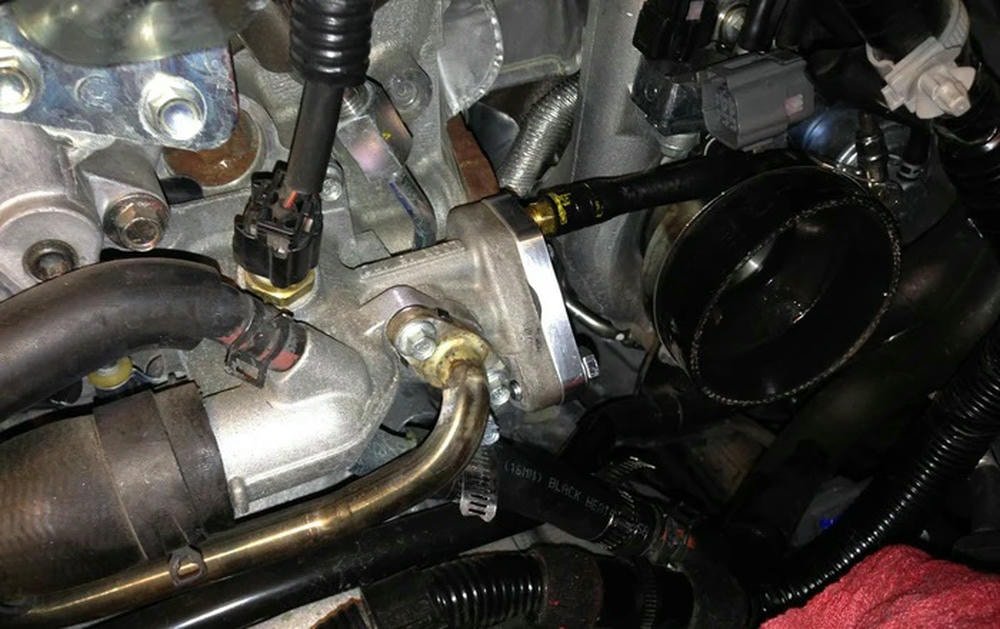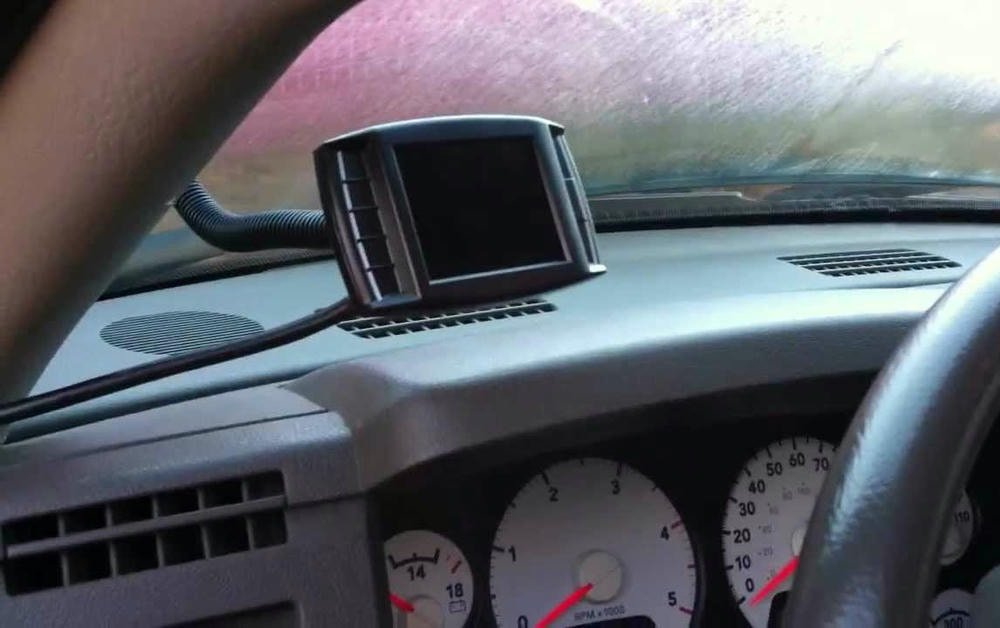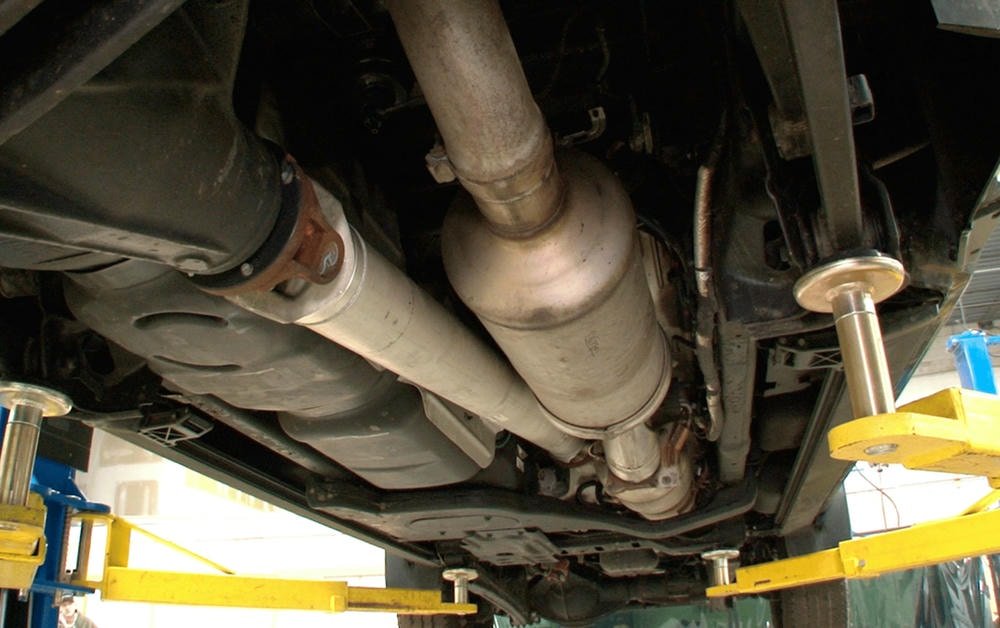Este artículo habla sobre cómo mantener y reparar los sistemas de cableado de los camiones diesel. Mantener en buen estado el sistema de cableado de su camión es como asegurarse de que las venas de nuestro cuerpo están sanas.
Al igual que las venas transportan la sangre que nos ayuda a funcionar, los cables transportan la electricidad que alimenta las piezas del camión. Con el tiempo, estos cables pueden desgastarse o dañarse por el uso y el entorno.
Para evitarlo, es fundamental revisarlas a menudo para detectar cualquier signo de problema, como por ejemplo cables rotos o conexiones sueltas. Una práctica herramienta llamada multímetro ayuda a encontrar problemas como cortocircuitos.
La limpieza de los conectores y el uso de grasa especial mantienen alejada la humedad, lo que evita la oxidación. Si hay problema de conexión a tierrarepararlo rápidamente impide que se produzcan descargas eléctricas e incendios.
Cuando las piezas se rompen o desgastan, cambiarlas por otras de alta calidad ahorra dinero al evitar problemas mayores más adelante.
Regular checks with tools made for diesel trucks keep everything running smoothly without surprises down the road.
Quédate para aprender a hacer todo esto bien.
Índice
ToggleConsejos de mantenimiento rutinario
Keeping a wiring system in good shape needs regular care. Simple actions like checking for wear and cleaning connections help avoid big problems.
Inspección periódica para detectar desgaste y daños
Compruebe el wiring systems in diesel trucks often. Look for any signos de desgaste o daños. This includes checking for frayed wires, corrosion on connectors, and broken parts. These issues can lead to common problems like cortocircuitos y fallos eléctricos.
Utiliza herramientas como un multímetro para comprobar si hay circuitos abiertos y asegurarte de que todo funciona correctamente. Asegúrese también de que las conexiones están bien apretadas y son seguras. Las conexiones sueltas pueden provocar fallos y riesgos para la seguridad.
Las revisiones periódicas ayudan a evitar problemas graves más adelante, ahorrando tiempo y dinero.
Limpieza y protección de los conectores
To keep wiring systems in diesel trucks working well, limpieza y protección de los conectores son pasos clave. La suciedad, el polvo y la humedad pueden causar problemas en estas conexiones. Utilizar un cepillo suave o aire comprimido puede ayudar a eliminar la suciedad de los conectores.
A continuación, aplicando grasa dieléctrica mantiene la humedad fuera y previene la corrosión. Este paso ayuda a mantener una conexión eléctrica fuerte que es crucial para el rendimiento de un camión.
Regular maintenance of the electrical system components ensures the longevity of your vehicle’s performance.
Proteger los conectores también implica comprobarlos regularmente en busca de signos de desgaste o daños. Si algún conector parece dañado, debe sustituirse para evitar problemas eléctricos mayores en el camión.
El uso de piezas de calidad al sustituir los conectores garantiza un mejor manejo en carretera, haciendo que cada viaje sea seguro y fiable.
Comprobación de la conexión a tierra
Comprobación de conexión a tierra adecuada es imprescindible. Este paso mantiene su camión diésel a salvo de descargas eléctricas e incendios. Utilice un multímetro para comprobar las conexiones a tierra de su sistema de cableado.
Una buena conexión mostrará baja resistencia en el multímetro. Si ve alta resistenciala conexión a tierra no es correcta. Arreglar esto puede evitar grandes problemas.
El propietario de un camión compartió su historia sobre la reparación de sistemas sin conexión a tierra. Pensaba que las luces parpadeaban porque las bombillas estaban fundidas. Pero, tras utilizar un multímetro, descubrió que se trataba de un problema de conexión a tierra.
Después de corregirlo, todos sus problemas eléctricos cesaron. Esto demuestra lo importantes que son las comprobaciones de conexión a tierra para la seguridad y el buen funcionamiento de los sistemas eléctricos de su camión.
Control de cortocircuitos o circuitos abiertos
Para mantener un camión diesel funcionando sin problemas, vigile cortocircuitos o circuitos abiertos es clave. Estos problemas pueden impedir que la energía fluya hacia donde tiene que ir. Utilice un multímetro para comprobar los caminos de la electricidad.
This tool helps find where the issue might be by showing if electricity is not reaching parts of the circuit. Many truck owners have fixed wiring system issues by catching shorts early.
Buscan señales como fusibles que saltan con frecuencia o luces que parpadean. Estos indicios sugieren un cortocircuito eléctrico o un circuito abierto en alguna parte del sistema. Una simple prueba con un multímetro puede ahorrar tiempo y dinero antes de que estos problemas causen problemas mayores.
Por ejemplo, utilizando un prueba de continuidad ayuda a confirmar si una ruta eléctrica está completa y sin roturas. Hacer esto con regularidad evita averías repentinas y mantiene todo funcionando como debería.
Problemas comunes del sistema de cableado
Common wiring system issues like corrosion and damaged wires can cause big headaches. Learn how to spot and fix these problems to keep your truck running smoothly.
Corrosión y oxidación en los conectores
Corrosión y oxidación pose serious issues for diesel truck wiring systems. Gradually, humidity and air can wear down connectors. This results in rendimiento eléctrico inferior y puede hacer que el motor deje de funcionar.
Para identificar rápidamente estos problemas, los propietarios deben buscar sustancia pulverulenta verde o blanca en los componentes metálicos de los conectores.
Para tratar la corrosión es necesario limpiar con un spray especial creado para eliminar el óxido y salvaguardar las conexiones. Tras la limpieza, la aplicación de una fina capa de grasa dieléctrica ayuda a evitar futuras corrosiones al bloquear la humedad.
Esto es fundamental no sólo para los camiones, sino para cualquier vehículo que dependa de sistemas eléctricos para funcionar sin problemas.
Prevention proves superior to cure, particularly in maintaining your diesel truck’s wiring system.
Cables rotos o deshilachados
Los cables rotos o deshilachados en el sistema de cableado de un camión diesel pueden causar problemas importantes. Estos pueden resultar en pérdida de potencia, cortocircuitos, e incluso incendios. Por lo tanto, es crucial que los propietarios de camiones inspeccionen rutinariamente el cableado de su vehículo.
Esto implica examinar con gran detalle cualquier signo de desgaste, como grietas o roturas en el aislamiento. En este punto resulta útil un multímetro para comprobar la continuidad. Si la herramienta no muestra una trayectoria continua, es probable que haya una rotura en el cable.
Abordar estos problemas con prontitud es crucial. Muchos propietarios de camiones se han dado cuenta de que sustitución preventiva de secciones rotas o dañadas antes de que fallen ayuda a ahorrar tiempo y dinero. Herramientas como pelacables y cinta aislante resultan útiles para las reparaciones.
Asegurarse de que las conexiones del cableado permanezcan bien apretadas contribuye al buen funcionamiento de la carretilla y ayuda a evitar fallos eléctricos inesperados.
Conectores sueltos o dañados
Los conectores sueltos o dañados en el sistema de cableado de un camión diesel pueden provocar pérdida de potencia, cortocircuitos o lecturas erróneas de los sensores. Los camiones vibran a menudo durante la conducción. Con el tiempo, esta vibración puede aflojar los conectores.
Un conductor podría notar las luces parpadean o los indicadores funcionan de forma extraña if this happens. To fix these issues, one must first locate the loose connectors. They should then secure them firmly back into place.
Fixing wiring system issues also involves checking for damage on the connectors themselves. Óxido o dobleces en las partes metálicas de un tapón puede provocar un mal contacto con los puntos eléctricos.
El uso de herramientas como el multímetro ayuda a comprobar que las conexiones son correctas. y garantiza que cada circuito funcione correctamente después de la reparación. Sustituir los conectores desgastados es crucial para evitar futuros problemas eléctricos en los sistemas del camión.
Cómo solucionar los problemas del sistema de cableado
Para solucionar los problemas del sistema de cableado, se puede utilizar una herramienta para comprobar el flujo eléctrico en busca de caminos rotos. Encontrar y reparar cortocircuitos o circuitos abiertos ayuda a que todo funcione sin problemas.
Uso de un multímetro para comprobaciones de continuidad
Utilizando un multímetro para controles de continuidad es una parte clave de localización de averías en las conexiones de cableado. Los propietarios de camiones diesel a menudo confían en esta herramienta para encontrar roturas o cortocircuitos en el sistema de cableado de su vehículo. Aquí están los pasos para realizar con eficacia comprobaciones de continuidad con un multímetro:
- Desconecta la alimentación del circuito que estás probando. La seguridad es lo primero, asegúrate siempre de que no circula corriente por los cables.
- Seleccione el ajuste de continuidad en su multímetro. Suele mostrar un símbolo parecido a ondas sonoras.
- Conecte la sonda negra a la toma común (COM) y la sonda roja a la toma de tensión de su multímetro.
- Toque con una sonda cada extremo del cable o conexión que esté comprobando. Para esta prueba no es necesario que te preocupes de qué color va dónde.
- Escuche un pitido o busque una lectura de cero. Un pitido o un cero significa que el circuit is complete and there are no breaks.
- If you hear nothing or see “OL” (open loop) on display, there’s a break somewhere in the wiring.
- Consulte connectors and terminals as part of your test too; these can also cause issues if they’re not making good contact.
- Use these tests to check grounding by placing one probe on earth (a metal part of the truck connected to ground) and another on the grounding wire’s endpoint.
- Perform these checks regularly as part of maintenance to catch issues before they cause failures.
- Take notes of your findings, especially if troubleshooting complex systems with many wires, so you don’t lose track of which circuits are okay and which are not.
This process can save time and money by avoiding unnecessary replacements and pinpointing exactly where problems lie within electrical systems upkeep, especially important in diesel engine maintenance where correct sensor functionality is crucial for engine diagnostics.
Diagnosing Short Circuits and Open Circuits
Diagnosing short circuits and open circuits is key in preventing wiring system failure. Here are steps diesel truck owners can take, using tools like multímetros and visual inspection, to find and fix these issues.
- Get a multimeter. This tool measures electrical properties like voltage and resistance. It’s essential for testing your truck’s wiring.
- Start with safety. Always disconnect the power before working on the electrical system to avoid getting shocked.
- Look for signs of damage or wear on wires and connectors. Cracks, frays, or burns can indicate where a problem might be.
- Compruebe si conexión a tierra adecuada. A loose ground wire can lead to an open circuit.
- Use the multimeter’s continuity setting to test connections. A continuous beep means the path is clear; no sound suggests an open circuit.
- For short circuits, switch your multimeter to measure resistance (ohms). Touch probes to each end of a suspect wire or component. Very low resistance often points to a short.
- Inspect relays and fuses in your circuit breaker panel. Burnt or damaged pieces can be signs of short circuits causing too much current flow.
- Test run capacitors if your truck has them, especially in parts like HVAC systems or power strips used for additional equipment.
- Follow wiring diagrams for your specific truck model closely when checking connections against what’s expected.
10.Use clamp meters around wires without direct contact if you suspect high currents are causing problems but don’t want to disrupt the circuit completely by unplugging wires.
Following these steps helps truck owners find where electrical paths break (open circuits) or unwanted connections occur (short circuits), making repairs easier and preventing future issues.
Reparación o sustitución de secciones dañadas
Repairing or replacing damaged sections of a wiring system in a diesel truck is key to preventing electrical problems. It ensures the system works well and safely.
Here’s how one might go about this task:
- Identify damaged or worn-out wires by checking for visible signs of wear, such as frayed edges or cuts.
- Use a multimeter probe to check for continuity in the wires. If electricity does not flow as it should, there’s likely a break in the wire.
- Busque signs of corrosion or oxidation on connectors. These can interrupt the electric flow and need cleaning or replacement.
- Test each electrical component with the multimeter to pinpoint where the issue lies, whether it’s a broken wire or a faulty condenser.
- Disconnect the battery before attempting any repairs to avoid getting electrocuted or causing shorts in the system.
- Cut out the damaged section of wire if it’s repairable. Strip the ends of good wire still in place.
- Connect a new piece of wire using wire connectors or soldering techniques, making sure your repair matches the gauge and type of original wiring.
- Secure all connections with electrical tape or heat shrink tubing to protect them from wear and moisture.
- Reconnect ground wires properly since improper grounding can lead to unpredictable electrical behavior and safety hazards.
- Replace any blown fuses in the circuit breakers that may have resulted from short circuits during damage.
- After repairs, use surge protectors where possible to prevent future damage from voltage spikes.
- Recheck all repaired sections with a multimeter to ensure repairs are successful and electricity flows correctly through all circuits.
Always prioritize safety and proper handling techniques when working on electrical systems to avoid fire hazards and personal harm.
Ensuring Proper Sensor Functionality
Sensors in diesel trucks play a crucial role in the vehicle’s performance. They monitor everything from engine temperature to fuel efficiency. To keep these sensors working well, follow these steps:
- Use a multimeter to check sensor continuity. This tool helps you find any breaks or issues in the electrical path.
- Clean sensor surfaces with a mild cleaner. Dirt or oil can cause wrong readings.
- Consulte wiring connections to sensors for corrosion. Clean them with a special spray if you find any green or white powder.
- Replace sensors that give erratic or no readings. Even small errors can lead to big problems.
- Asegúrese conexión a tierra adecuada of sensors by checking their connection to the truck’s frame.
- Update your diesel truck’s software regularly. New updates can improve how sensors work and interact with other truck parts.
- Test sensor functionality with diagnostic tools designed for diesel trucks after any repair or installation.
- Protect wiring and sensors from heat and damage by using protective sheaths or conduits where possible.
- Follow manufacturer guidelines for sensor maintenance and replacement intervals.
For each step, make sure you follow safety rules to avoid electric shocks or damaging your truck’s electrical system. Using quality parts and tools will also save time and money in the long run by preventing future issues with sensor functionality.
Prevenir futuros problemas de cableado
To stop wiring problems before they start, use top-notch wires and parts. Make sure every wire is put in right. Keep an eye on your system and fix things when needed. This keeps your truck running smooth.
Want to learn more? Keep reading for smart ways to keep your wiring safe and strong.
Using High-Quality Wiring Components
Elegir high-quality wiring components is key for diesel truck owners. These parts, like Underwriters Laboratory (UL) certified cables and durable connectors, ensure safety and reliability.
Good quality wires resist corrosion better. They also handle electricity flow without overheating or breaking down.
High-quality electrical components make the system more reliable over time.
Owners should use parts that meet or exceed their truck’s needs. This includes switches, plugs, and dual run capacitors designed for heavy-duty use. Doing so reduces the risk of electrical shorts and ensures the wiring lasts longer.
Investing in top-notch materials saves money on repairs and keeps trucks running smoothly.
Proper Installation Techniques
For diesel truck owners, wiring correctly is key to avoid problems later. Using high-quality electrical wires and connectors can make a big difference. They should match the truck’s system requirements to prevent issues like shorts or malfunctions.
It’s also important to secure all wiring away from moving parts or heat sources, which could damage them over time.
Owners must ensure each connection is tight and well-protected against moisture or dirt, which often lead to corrosion. Applying dielectric grease on connectors helps in this protection.
Keeping wires neatly bundled and labeled simplifies troubleshooting and maintenance tasks. Following these steps closely during installation sets up the system for long-lasting performance, saving time and money on future repairs.
Regular Monitoring and Maintenance
Keeping an eye on your diesel truck’s wiring system is key. You must check it often to catch any issues early. This means looking for worn out wires, loose connectors, and ensuring everything is grounded well.
Utilice un multimeter regularly to test the electrical paths in your wiring. It helps you find shorts or open circuits before they cause big problems.
Making this a habit can prevent unexpected breakdowns. Replace parts that show signs of wear or damage immediately. Also, clean all connectors and use protective coatings to fight off corrosion and oxidation.
These simple steps extend the life of your truck’s electrical components and keep you safe on the road.
Conclusión
Maintenance and trouble fixes in wiring systems are key for diesel truck owners. They make sure trucks run well and safely. John Doe, an expert with years in electrical engineering, shares insights on this topic.
He has a deep knowledge from his work and studies.
John notes that routine checks and upkeep can stop most issues before they start. These steps ensure systems work as they should, according to him. Using quality parts during setup also helps avoid future problems.
He talks about the importance of safety and honesty in this field. For example, following set rules keeps everyone safe. Being clear about how things are done is just as important.
For daily use or special cases, John suggests regular monitoring of your wiring system. This helps catch any issues early on.
Yet, like anything else, maintaining wiring systems has its upsides and downsides. It can save time and money later but requires ongoing effort.
John believes keeping up with your wiring system is worth it for diesel truck owners’ peace of mind. It makes sure trucks run smoothly and last longer without big troubles along the way.
Preguntas frecuentes
What is the first step in maintaining and troubleshooting a wiring system?
The first step to maintain and troubleshoot a wiring system involves understanding how to troubleshoot wiring connections. This knowledge can help identify the root cause of any issues in your electrical outlets, light switch, or breaker box.
How do I repair my custom wiring setups?
To repair custom wiring setups, you need to follow a comprehensive guide on electrical systems maintenance and repair. It’s crucial to stay safe while working with electrical hazards by following safety measures at all times.
Can an electrician help me understand how capacitance affects my electrical system?
Yes! Electricians have expert knowledge about farads, the unit for measuring capacitance, as well as other components like bleed resistors and coils that are part of your thermostat or contactor setup.
Are there resources available online for learning more about maintaining and troubleshooting my home’s electrical wiring?
Definitely! You can find many guides on social media platforms that provide actionable guidance for maintaining your home’s electrical systems safely.
What should I be careful about when dealing with cookies while browsing these guides online?
While browsing these guides online, it’s important to remember GDPR regulations concerning cookies used by websites which track user behavior metrics such as bounce rate.

